
30 Super Carry is the new kid on the block, first being revealed in January of 2022. I’ve previously written on it, breaking the story initially, but since then there hasn’t been much coverage after the following SHOT Show. After over a year wallowing in the fading memories of shooters, I decided to give 30SC a shot, pun intended. Over the past several months I’ve shot hundreds of rounds through my own gun in the caliber. This is the start of a series detailing my thoughts on the guns and ammunition offerings, hoping to educate the public about this relative unknown.
This primer should give you a good baseline on what to expect from 30 Super Carry. We’ll cover ammunition prices, firearm options, ballistics gel test results, drill comparisons to 9mm, and more. Check back regularly for updates as this journey continues. Will 30SC turn out to be a faithful companion, or a fraud? Read on and find out.
Refresher on 30 Super Carry
For those unfamiliar, here’s the quick run down on 30 Super Carry. Despite its name, the projectile is actually .312 caliber, with a typical weight of 100 or 115 grains. Muzzle velocity ranges from 1,150-1,250 feet per second in defensive loads at the muzzle. In general, shooters should expect a minimum of +2 in capacity versus the same firearm in 9×19, thanks to its smaller diameter.
Real world examples include the Smith & Wesson Shield Plus, which goes from 10/13 round magazines to 13/16 with the smaller round. The EZ variation of the S&W Shield moves from 8 to 10 rounds when changing to 30SC. Finally we have a handful of full-size 1911’s from Nighthawk Custom that achieve 12 rounds in the magazine rather than 10 in 9mm. As we can see, +2 is a good rule of thumb, but not the rule, depending on the geometry of the magazine.
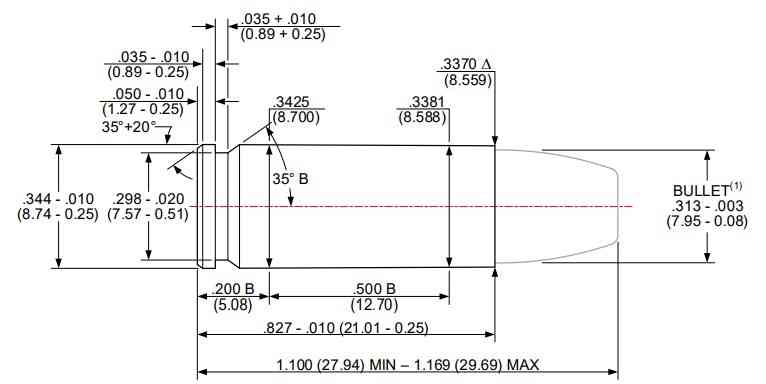
So far I’ve mentioned three pistols chambered for 30 Super Carry. Unfortunately, that’s all we’ve got as of this writing, as far as handguns go. There is one more option available to the public, and it takes a bit of a detour. Hi Point currently offers the 3095 Carbine in 30SC, coming in at a 10 round magazine, matching its 9mm counterpart’s capacity. With these four in mind, that gives us a budget long gun, two mid-priced pistols, and a high end custom 1911. There’s something for everyone, but we’re still lacking duty grade options. We’ll get more into that in a later article.
30SC Versus 9×19 Ammo Prices
In general, 30 Super Carry is more expensive than 9×19, which I consider its most direct competitor. That said, I think the numbers are a bit skewed due to the much wider variety of 9mm ammunition available to the public. To help provide a more direct comparison, I have only selected loads in 9mm that have a direct comparison to 30SC. This brings the prices much closer together, as there currently are no “budget” ammunition companies supporting 30 Super Carry. Of course we can find cheaper 9mm ammo options when opening our aperture, but shooter preferences may dictate how much that actually matters.
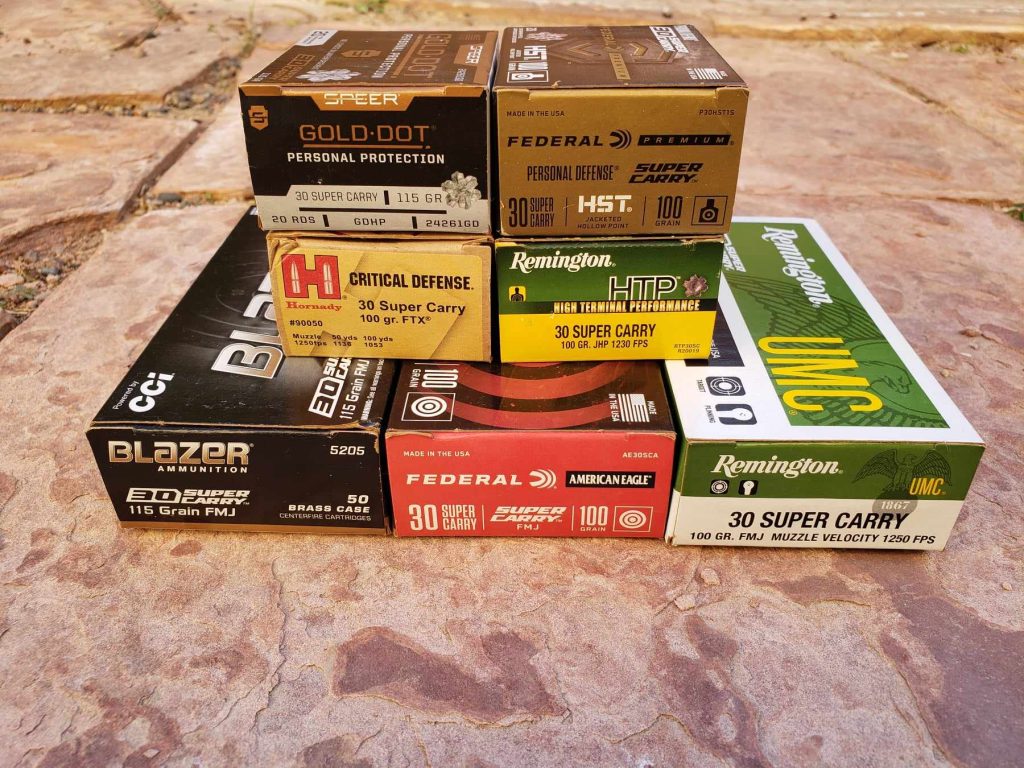
As part of this comparison we are looking at the price per round, current as of this writing. Ammunition prices fluctuate often, so what you see here may not be representative at the time you are reading. For reference, I’ve annotated my ammunition source for each round listed.
Full Metal Jacket
Blazer Brass (50 ct) – CCI Ammunition
- 115gr 9×19
- $0.479/round
- 115gr 30 Super Carry
- $0.659/round
Federal American Eagle (50 ct) – Lucky Gunner
- 115gr 9×19
- $0.440/round
- 100gr 30 Super Carry
- $0.510/round
Remington UMC (Green and White box, 50 ct) – Lucky Gunner
- 115gr 9×19
- $0.400/round
- 100gr 30 Super Carry
- $0.500/round
Federal American Eagle (1,000 ct) – Lucky Gunner
- 115gr 9×19
- $0.295/round
- 100gr 30 Super Carry
- $0.460/round
Jacketed Hollow Point
Federal HST (20 ct) – Federal Premium
- 124gr 9×19
- $1.899/round
- 100gr 30 Super Carry
- $1.949/round
Hornady Critical Defense – Natchez
- 115gr 9×19 (25 ct)
- $0.999/round
- 100gr 30 Super Carry (20ct)
- $1.499/round
Speer Gold Dot (20 ct) – Speer
- 115gr 9×19
- $1.849/round
- 115gr 30 Super Carry
- $1.899/round
As we can see, the difference in ammunition cost is actually relatively low for individual boxes when doing direct comparisons of make/model of round. There is a significant difference when looking at bulk ammunition, with 9mm beating 30SC prices by over $0.15 per round. Regarding defensive ammunition, it is important to note that 9×19 does currently offer 50 round boxes to those with law enforcement credentials. Some retailers will allow the general public to purchase these, reducing the cost per round. However, it is not a guarantee that the average person will have access to this, as some companies have already restricted their sale.
Additionally, some may note that Remington used to make a JHP load in 30 Super Carry. As of this writing, Remington has halted production on that load, which is why it is not present on this list.
Range Time and Reliability with 30 Super Carry
I initially picked up my 30SC Shield Plus in October of 2023. Since then the gun has been a staple of my range sessions, receiving a mix of slow fire and standardized drills. I have not yet had the opportunity to take 30SC into a class or competition environment, but that is part of the plan for evaluation. To date, all ammunition and, magazines, and the gun itself have been sourced out of pocket.
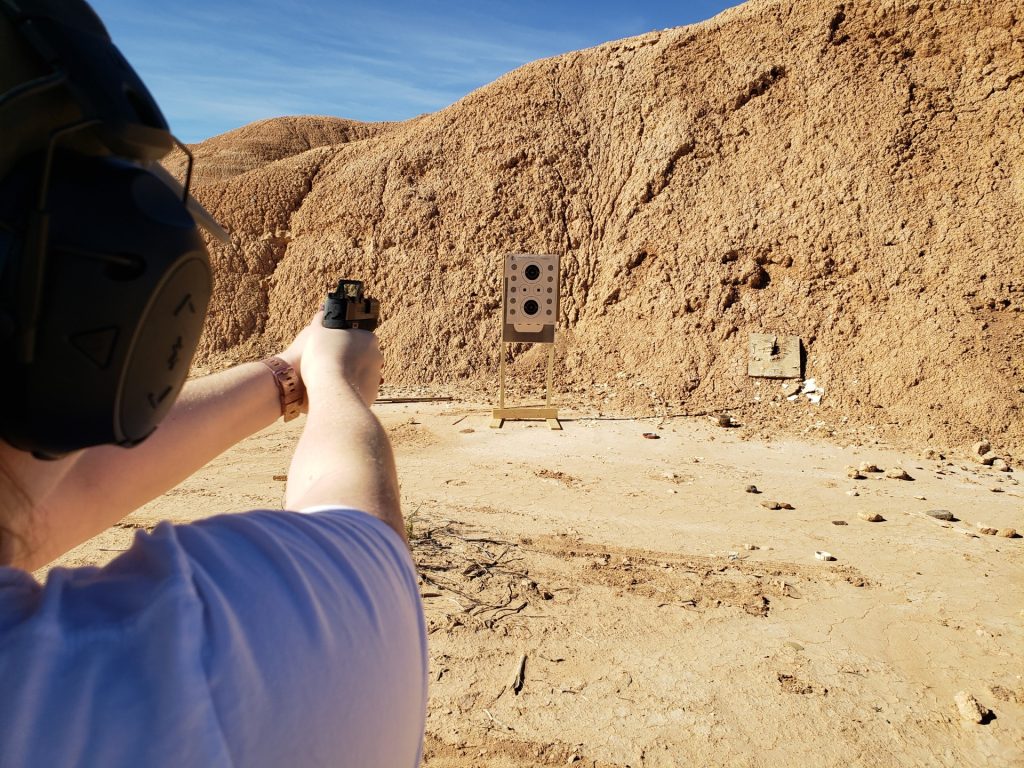
The current round count, as of this review is 1,077 through this Shield Plus. Below is the breakdown.
- 150x Federal American Eagle 100gr FMJ
- 755x Remington UMC 100gr FMJ
- 105x Blazer Brass 115gr FMJ
- 5x Remington HTP 100gr JHP
- 20x Hornady Critical Defense 100gr XTP
- 22x Federal HST 100gr JHP
- 20x Speer Gold Dot 115gr JHP
I won’t get too far into details on the guns itself, as this is not a pistol review. Reliability with 30SC has been solid across the board, minus one specific load. So far I’ve had four failures to fire with Blazer Brass. I did not attempt a second strike, with remedial action immediately clearing the stoppage 3/4 times. One occasion resulted in a failure to feed, requiring the magazine to be ejected to clear the stoppage. Outside of this, I have had no other reliability issues with 30SC.
Shooting Experience
Regarding the shooting experience, it is nearly indistinguishable from 9mm. While some may consider that a shortcoming, I consider a great asset for 30 Super Carry. With performance comparable to 9×19, but with a not-insignificant increase in capacity, 30SC in a no-brainer in my mind. If there was a full size Glock or Smith & Wesson M&P in 30 Super Carry available, I’d buy it immediately and run it as my main training gun.
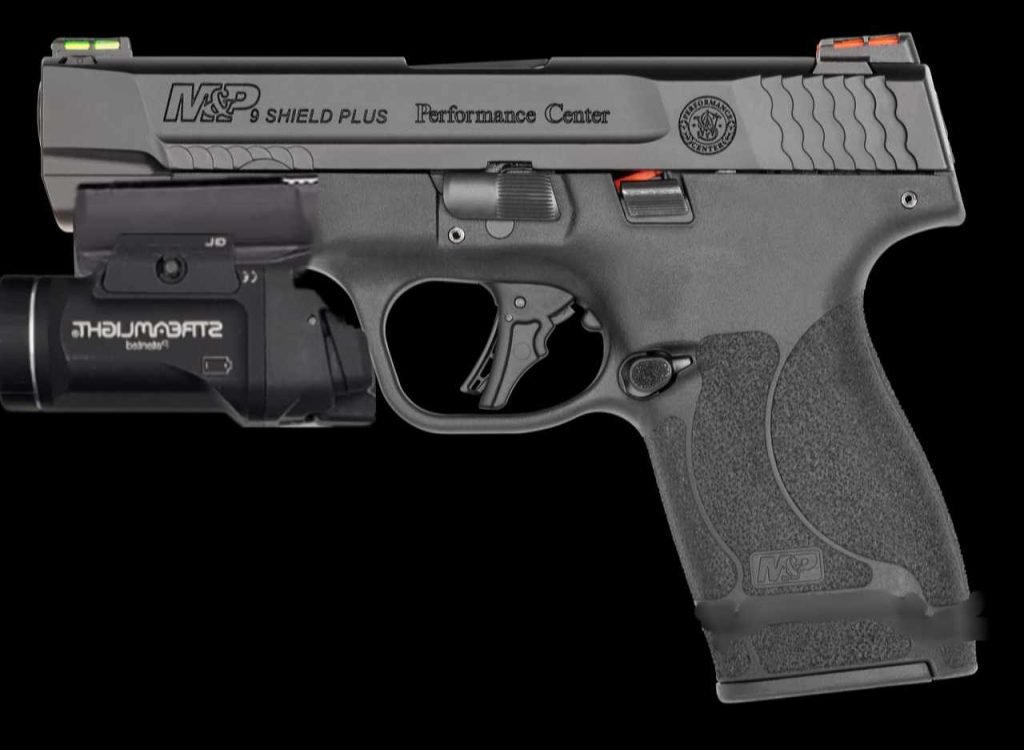
We’ll get more into use cases for 30SC in another article. For now, know that 30SC is proving to be reliable round that I am trusting my life and the lives of my loved ones to.
Gel Testing 30 Super Carry
In early December 2023 I conducted my own ballistics gel testing of 30 Super Carry. I won’t get into depth here, instead providing a few quick notes on the test. For this I used my Smith & Wesson Shield Plus, which features a 3.1″ barrel, an important note. Rounds tested include Federal HST, Speer Gold Dot, Hornady Critical Defense, and Remington HTP.
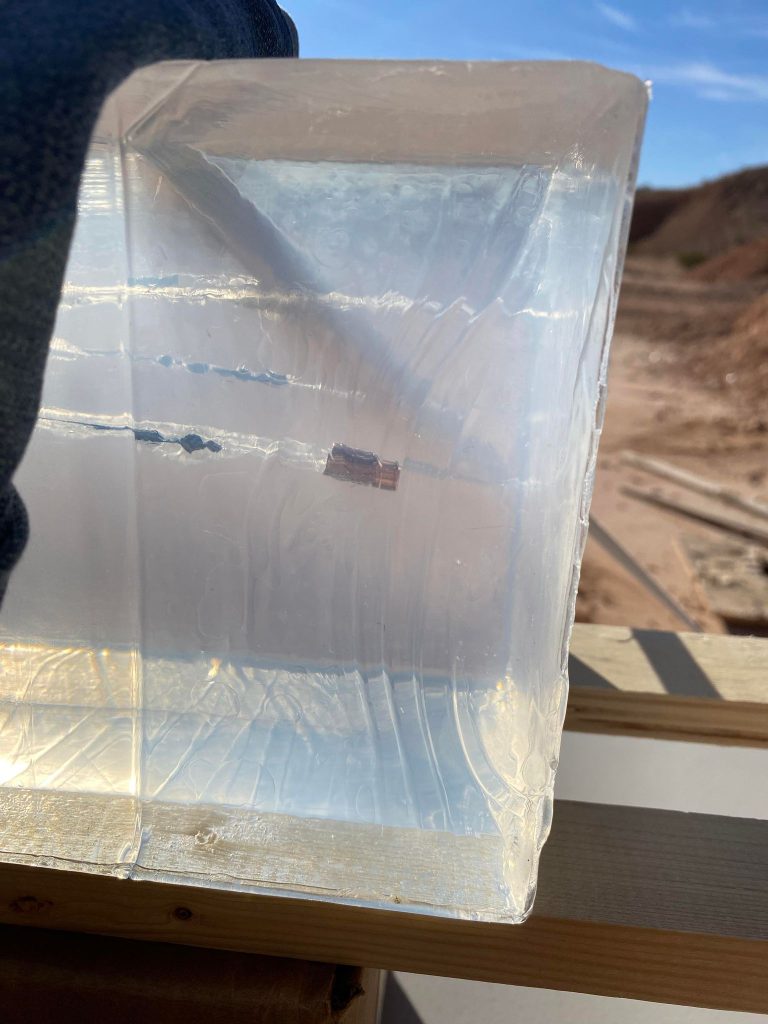
Testing parameters were 5-round groups fired into Clear Ballistics gelatin with a 4-layer denim barrier. Velocity measurements were recorded using a Competition Electronics ProChronoLTD chronograph. For more information, check out the full test results >>HERE<<.
- Average penetration of 15.35 inches with Hornady Critical Defense, with average expansion to 0.45 inches.
- Average velocity measurement of 1,156FPS with Critical Defense.
Spoiler: As of the time of this writing, I recommend Hornady Critical Defense for use with the shorter Shield Plus barrel.
More Information
I highly recommend reading Jeremy Stafford’s fantastic article in Guns & Ammo on 30 Super Carry, which you can find >>HERE<<. He spent time at the Federal factory testing out a handful of loads from both the 3.68″ barrel Shield EZ, and one of Nighthawk’s custom 1911’s. I won’t spoil all the details, but here are a few quick numbers to whet your appetite:
- S&W Shield EZ gel testing, heavy clothing barrier: 15 inches of penetration, expansion to over 0.51″ with both Federal HST and Speer Gold Dot
- S&W Shield EZ velocity measurements: 1,205FPS with Federal HST, 1,095FPS with Speer Gold Dot
Outside of this, Jeremy goes into accuracy out to 50 yards with both the EZ and Nighthawk guns, more direct comparisons to 9×19 and 380ACP, comments from the President of Federal, and more.
Drills – 30 Super Carry Versus 9mm
One of the claims made about 30 Super Carry is its similar shooting characteristics to 9mm. To test this I chose a handful of drills to shoot, giving us time and accuracy standards to measure against. For these drills I am shooting my 30SC Shield Plus, along with a 9mm Glock 48. Full transparency, there will be some differences here since they are not the exact same make or model of pistol.
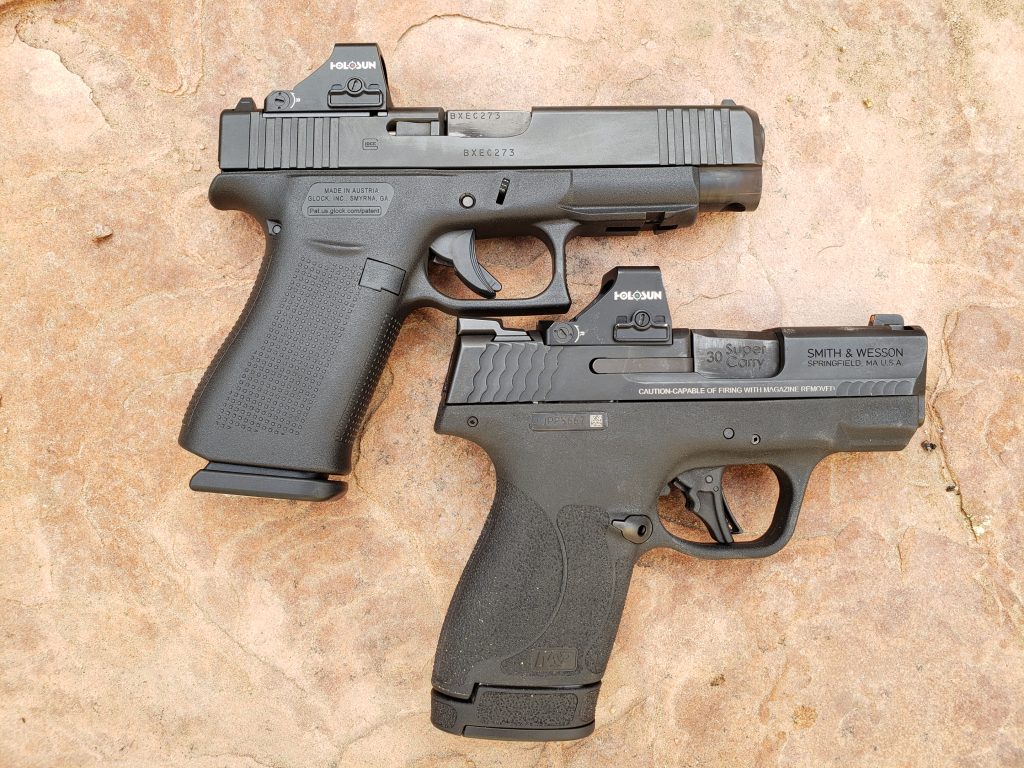
Unfortunately I do not own a Shield Plus in 9mm, nor do I make enough money to buy two pistols for the sake of one article. That said, the G48 is my closest comparison to the 30SC Shield Plus, and I find them to be very similar overall. How do these compare on the range?
The Hardwired Tactical Super Test
The Hardwired Tactical Super Test is one of my favorite drills. It covers distances of 5, 10, and 15 yards, requiring 10 rounds fired at each stage. Par times move from 1.5 seconds per round, down to 0.5 seconds between rounds at the closest distance. This balance of speed and accuracy is critical, forcing shooters to adjust for their perceived target size. No drawstroke is required, making this a pure test of shooting skill, helping to keep things consistent between runs. I shot The Super Test twice with each pistol for consistency. For reference, a 270/300 is considered a passing score.
Glock 48 Run 1
- 15 Yards: 7.50 seconds
- 10 Yards: 6.73 seconds
- 5 Yards: 3.15 seconds
- Total: 271/300, with 1x round dropped off target at 15 yards
Glock 48 Run 2
- 15 Yards: 8.13 seconds
- 10 Yards: 6.33 seconds
- 5 Yards: 3.43 seconds
- Total: 285/300, clean
Smith & Wesson Shield Plus 30SC Run 1
- 15 Yards: 6.88 seconds
- 10 Yards: 6.31 seconds
- 5 Yards: 3.74 seconds
- Total: 276/300, clean–with most rounds being dropped at 5 yards
Smith & Wesson Shield Plus 30SC Run 2
- 15 Yards: 8.06 seconds
- 10 Yards: 6.39 seconds
- 5 Yards: 4.27 seconds
- Total: 280/300, clean
Rangemaster Bullseye Course
The Rangemaster Bullseye course is something I’ve covered on Primer Peak before. It was integral to my practice sessions leading up to the Rangemaster Master Instructor Development Course, and as such I’m very familiar with it. I chose this due to the variety of skills and distances it covers, while also avoiding the drawstroke which could stack the odds towards a gun I’m more familiar with, rather than a test of shootability. Instead of listing the entire course of fire here, I’ll simply give the total scores, along with relevant notes, for each run.
Glock 48 Run 1
- 242/300, dropped 4x shots off of B8
Glock 48 Run 2
- 244/300, dropped 4x shots off of B8
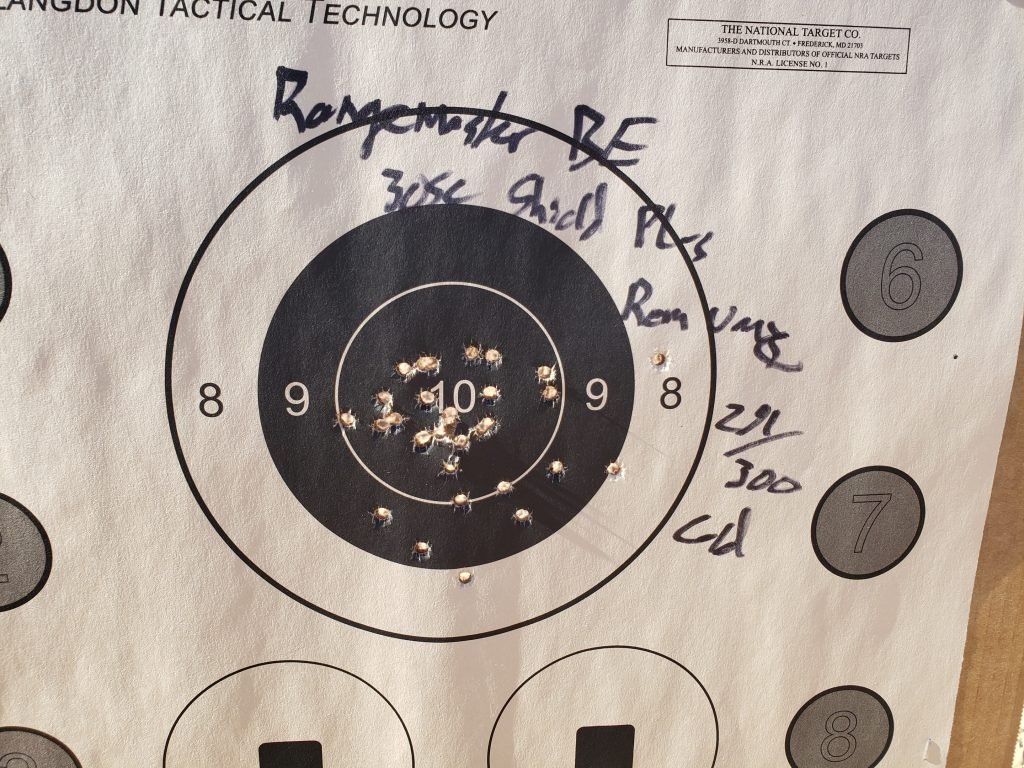
Smith & Wesson Shield Plus 30SC Run 1
- 291/300
Smith & Wesson Shield Plus 30SC Run 2
- 274/300, dropped 1x off of B8
Interestingly, I shot the Glock 48 very poorly during the Rangemaster Bullseye Course. I consider this an outlier in performance, but two iterations in a row of subpar performance is real. I considered scratching those runs for fresh attempts at a later date, but decided that wouldn’t be fair. Both the G48 and Shield Plus were shot on the same day, with the Shield runs starting the range session.
Five Yard Roundup
Next I ran through Justin Dyal’s Five Yard Roundup. This is a drill that has my number, especially at the latter two stages. It tests a drawstroke, recoil control, and your ability to shoot both strong-and-weak hand only. While everything is fired at only five yards, the accuracy requirement is incredibly tight, and par times are short. Shooters must finish each stage in under 2.50 seconds, and keep their score at a 95/100 or better to pass.
Glock 48 Run 1
- Draw to First Shot: 2.44 seconds
- Four Rounds from Low Ready: 1.91 seconds
- Three Rounds, Strong Hand Only, Low Ready: 2.39 seconds
- Two Rounds, Weak Hand Only, Low Ready 2.23 seconds
- Total: 93/100, clean
Smith & Wesson Shield Plus 30SC Run 1
- Draw to First Shot: 2.36 seconds
- Four Rounds from Low Ready: 1.92 seconds
- Three Rounds, Strong Hand Only, Low Ready: 3.21 seconds
- Two Rounds, Weak Hand Only, Low Ready: 1.82 seconds
- Total: 96/100, clean, trigger freeze on third string
Smith & Wesson Shield Plus 30SC Run 2
- Draw to First Shot: 2.47 seconds
- Four Rounds from Low Ready: 2.05 seconds
- Three Rounds, Strong Hand Only, Low Ready: 2.51 seconds
- Two Rounds, Weak Hand Only, Low Ready 1.82 seconds
- Total: 94/100, clean
Rangemaster Baseline Assessment Drill
To close out a range session, I decided to shoot the Rangemaster Baseline Assessment Drill (BAD) twice. In a shift from previous test procedure, these were done with my Glock 34, and the 30SC Shield. This G34 features a direct millled Aimpoint ACRO P-1, and ATEi Shim Sights, with the rest of the gun being stock. There is no ulterior motive here, I simply needed to shoot my G34 in preparation for a class, and still had enough 30SC to run through the drill.
Glock 34 Run 1
- 290/300
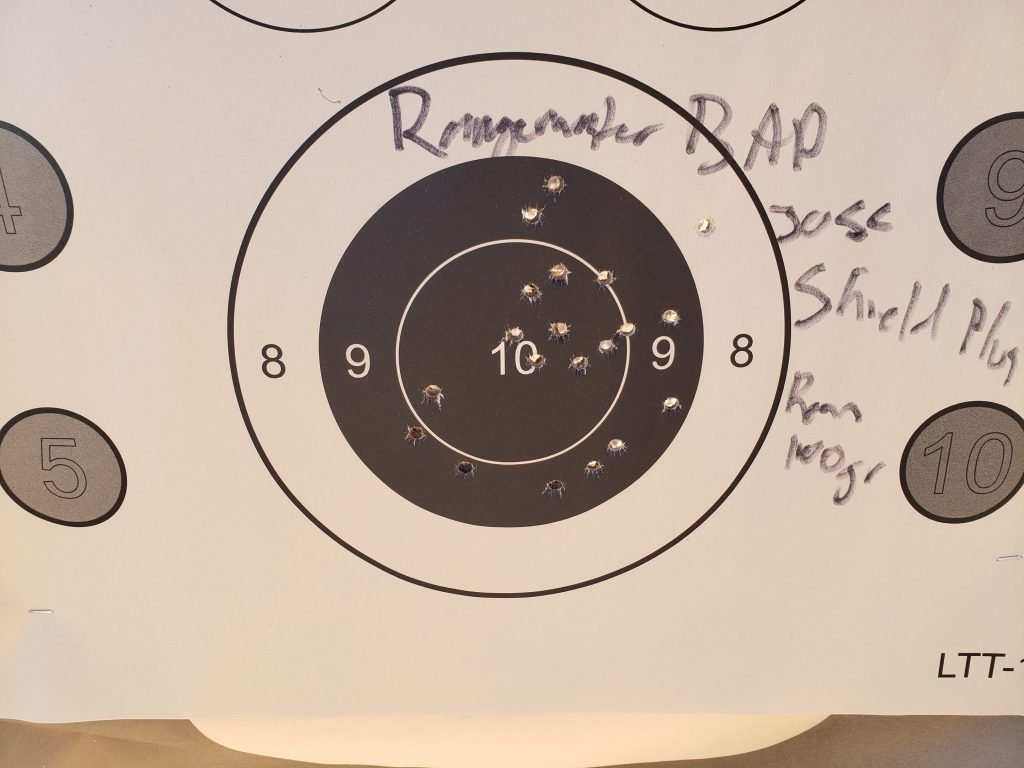
Smith & Wesson Shield Plus 30SC Run 1
- 289/300
I was a little surprised to see how comparable my scores were between the compact Shield Plus and the full size G34. Interestingly, I had two rounds of 30SC that would’ve been line breaks with the slightly larger rounds of 9mm. Close only counts in horseshoes and hand grenades, but it was an interesting observation that could have implications for competition or qualification courses.
Wrapping Up Drills
As we can see, there isn’t much difference between the 30SC Shield Plus and the 9mm Glock 48. I attribute most of the differences to greater familiarity with Glock, being my primary pistol for nearly seven years. Both feel fairly similar under recoil, with the Shield Plus feeling slightly easier to reacquire the dot.
Outside of these three drills, I’ve also shot Dot Torture several times with both guns back to back. Each gun has edged the other out on more than one occasion, without a clear winner rising to the top. There are no noticeable changes in my point of aim or impact, making transitioning between the two rounds perfectly seamless. In short, whether you choose 30SC or 9mm, it won’t be your ammunition choice holding responsibility for your results on target.
Closing out A Primer on 30 Super Carry
As you might have guessed by now, I’m a fan of 30 Super Carry. Offering comparable performance to 9mm, but with improved capacity, there’s a lot to like. Right now, the biggest barriers to entry, in my mind, are options for pistols and the price of ammunition. Unfortunately, this seems to be a self-fulfilling prophecy. People don’t buy into 30SC because there’s not much support, but companies won’t support 30SC because there’s not much interest in the current offerings. Something’s got to give, either companies must take a risk to offer the people what they want, or people need to take a dive on guns that might not meet their needs.
With good performance in ballistic testing, solid capacity, and easy shooting characteristics, I think 30SC is worth the risk. Ammunition is still plentiful online, and there’s quite a bit available on shelves in my local area. Tell us what you think. Have you tried 30 Super Carry? If you haven’t given it a chance, what are your reasonings for holding back?
Support My Work
If you made it this far, thanks for reading! Writing isn’t my full-time profession, and nearly everything I do comes out of my own pocket. Between ammunition, tuition, range fees and more, expenses add up fast. If you like what I have to offer, consider making a donation to my Patreon.
Every bit helps bring more work like this to you, and contributes to shortened timelines or more in-depth work on my part. You’ll also have more direct access to me, offering suggestions for future projects, looking behind the scenes, and getting early access to some content. You can find my Patreon >>HERE<<





3 Trackbacks / Pingbacks